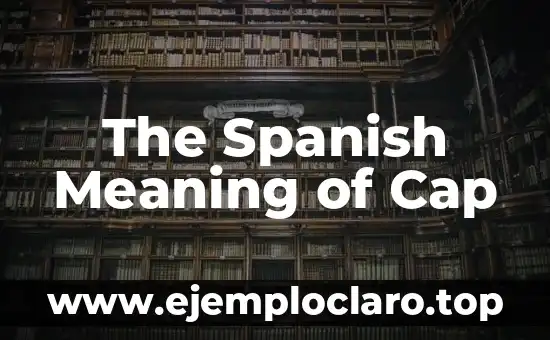The Möbius triangle, a concept deeply rooted in topology, offers a fascinating glimpse into the properties of single-sided surfaces. This mathematical marvel, while lesser-known than its strip counterpart, presents intriguing possibilities in geometry and beyond.
¿Qué es el significado del triángulo de Möbius?
The Möbius triangle refers to a three-dimensional shape that extends the principles of the Möbius strip. It maintains the strip’s single-sided nature but introduces complexity with an additional dimension. This concept challenges traditional geometric understanding by creating a surface with unique topological properties.
Historically, August Möbius’s discovery of the Möbius strip in 1858 laid the groundwork for exploring higher-dimensional analogs, leading to the conception of the Möbius triangle.
Understanding the Geometry of a Single-Sided Surface
The geometry of a single-sided surface, like the Möbius triangle, defies conventional three-dimensional expectations. It has one side, one edge, and two faces, creating a continuous surface that loops back on itself. This structure allows for unorientable properties, where left and right cannot be distinguished consistently.
También te puede interesar

Biodiversity, the variety of life on Earth, holds immense significance for our planet's health and humanity's well-being. Understanding its value is crucial for conservation efforts and sustainable development.

In the enchanting tale of Cinderella, the glass slipper emerges as more than just a footwear; it's a potent symbol of transformation and identity. This delicate shoe, crafted from glass, serves as a metaphor for the fragility and beauty of...

Medical symbols have long been integral to the healthcare profession, serving as visual representations that convey meaning and foster trust. These emblems, often rooted in ancient mythology and history, are more than just logos; they represent the ethos of medicine....

In the realm of language, phrases like seek up carry nuanced meanings that go beyond mere definitions. This article delves into the intricacies of seek up, exploring its meanings, usage, and significance in various contexts. By understanding this phrase, we...

The term cap in Spanish can refer to various concepts, depending on the context. It is an abbreviation and can have different meanings in Spanish, such as capitán (captain) or capítulo (chapter). This article explores the various meanings and uses...
Applications of such geometry are found in theoretical physics and materials science, where understanding non-orientable spaces is crucial.
Ejemplos del triángulo de Möbius en diferentes contextos
- Mathematics: Used in topology to study properties preserved under continuous deformations.
- Art: Featured in sculptures and installations to visually represent mathematical concepts.
- Engineering: Inspires designs in materials with unique surface properties for advanced applications.
Each example showcases the versatility of the Möbius triangle across diverse fields.
The Paradox of the Infinite in the Möbius Triangle
The Möbius triangle embodies the paradox of the infinite within a finite structure. Its single-sidedness allows for an infinite loop, challenging perceptions of space and dimensionality. This paradox is central to its mathematical significance, representing a bridge between finite and infinite concepts.
5 Fascinating Properties of the Möbius Triangle
- Non-Orientability: Cannot consistently distinguish left and right.
- Single-Sidedness: Exists as a single surface without separation.
- Edge and Face Count: Possesses one edge and two faces.
- Infinite Loop Potential: Facilitates continuous traversal without end.
- Topological Flexibility: Adaptable to various mathematical models.
These properties make the Möbius triangle a subject of fascination in topology.
The Never-Ending Surface: A Topological Marvel
This surface, akin to the Möbius strip but in three dimensions, offers a glimpse into topological marvels. Its unique structure allows for continuous movement without boundaries, exemplifying the beauty of mathematical exploration.
¿Para qué sirve el triángulo de Möbius?
The Möbius triangle serves as a tool for understanding complex topological spaces, influencing fields like quantum mechanics and materials science. Its applications extend to art and education, aiding in visualizing abstract concepts.
The Möbius Strip: A Related Concept
While the Möbius strip is a two-dimensional surface with one side and one edge, the Möbius triangle extends this concept into three dimensions. Both challenge traditional geometric understanding, offering insights into non-orientable spaces.
The Influence of the Möbius Triangle in Modern Art
In modern art, the Möbius triangle inspires sculptures and installations that visually represent mathematical concepts. Artists use its unique properties to explore themes of infinity and continuity, creating thought-provoking pieces.
Unraveling the Meaning of the Möbius Triangle
The Möbius triangle’s meaning lies in its representation of non-orientable spaces, crucial in topology. It signifies the infinite and continuous, challenging traditional spatial perceptions and expanding mathematical understanding.
¿Cuál es el origen del triángulo de Möbius?
The Möbius triangle originates from August Möbius’s 1858 discovery of the Möbius strip. Extending this concept into three dimensions led to the development of the Möbius triangle, expanding topological studies.
The Möbius Surface: Beyond the Strip
The Möbius surface encompasses more than the strip; it includes higher-dimensional analogs like the triangle. These surfaces are pivotal in understanding complex topological spaces, essential in advanced mathematical theories.
¿Cuál es el impacto del triángulo de Möbius en las matemáticas?
The Möbius triangle significantly impacts mathematics by providing a model for studying non-orientable spaces. It influences topology, geometry, and theoretical physics, offering new perspectives on spatial properties.
Cómo usar el triángulo de Möbius y ejemplos de uso
Using the Möbius triangle involves applying its properties in models and designs. Examples include its use in teaching topology, inspiring artistic designs, and informing material science innovations. Each application highlights its versatility.
INDICE

